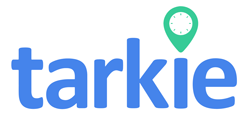Ever wondered how automated payroll systems handle pay adjustments like loans, leaves, and allowances? In today’s fast world, managing these adjustments is key. It affects employee happiness and follows the law. Automated systems are made for small to medium businesses in the Philippines.
They make these complex tasks easy and fast. This means less chance of mistakes. So, HR and employees get payments on time and right. This lets businesses grow without getting stuck in paperwork.
Key Takeaways
- Automated payroll systems simplify the management of payroll adjustments.
- Efficient handling of employee loans ensures compliance and accuracy.
- Leaves and allowances can be tracked seamlessly within payroll systems.
- Reducing manual errors saves time for HR departments.
- Automated systems allow businesses to prioritize strategic planning over payroll administration.
Introduction to Automated Payroll Systems
Automated payroll systems are key in today’s payroll management. They offer solutions that make payroll tasks easier. These systems improve accuracy in salary and tax calculations.
They also handle adjustments for loans and leave. By using these systems, companies cut down on errors from manual input. A central database keeps employee records accurate and current.
These systems track employee hours automatically. This helps companies follow overtime laws. Payroll processing time drops, letting HR teams handle more employees.
As companies grow, moving to automated systems is crucial. It keeps them effective and compliant.
Automated tax management modules help businesses follow tax laws. This reduces the chance of financial penalties. It also makes sure employees get their pay on time and correctly.
With more people working remotely, cloud-based solutions are vital. They manage data centrally, meeting the needs of workers in places like the Philippines.
Understanding Payroll Adjustments
Payroll adjustments are key to keeping employee pay accurate. They happen for reasons like loans, leave, and allowances. Getting these right boosts employee happiness and keeps the company in line with Philippine laws.
These adjustments might mean figuring out taxes when salaries change or fixing payroll mistakes. For small and medium businesses, using payroll software is a big help. It makes handling these tasks easier and faster, cutting down on errors.
In the Philippines, knowing the minimum wage and overtime rules is crucial. In Metro Manila, the minimum wage is PHP 610 a day. In agriculture, it’s PHP 573. Payroll systems must get these right to avoid legal trouble.

How Payroll Systems Manage Loans
Payroll systems are key in managing employee loans well. They help reduce work for administrators and make processes clear. There are many types of loans, like salary advances and personal loans, each with its own repayment plan. It’s vital for payroll teams to track these loans accurately.
Types of Employee Loans
There are different kinds of loans in companies:
- Salary Advances: Short-term loans based on future earnings.
- Personal Loans: Used for personal needs, paid back through salary.
- Micro-Financing: Small loans for immediate financial help.
Automatic Deduction Processes for Loans
Using payroll deduction for loans makes things more efficient. Automated systems figure out how much to deduct each pay period. This way, loan deductions happen on time, keeping everyone informed and payroll tasks simple for HR.
Using these automatic systems builds trust and financial stability in the workplace. It lets employees concentrate on their jobs without stress about loan payments. Here’s how automatic deductions usually work:
| Loan Type | Repayment Frequency | Typical Deduction Rate |
|---|---|---|
| Salary Advances | Bi-weekly | 10% of gross salary |
| Personal Loans | Monthly | Fixed monthly amount based on loan |
| Micro-Financing | Weekly | 5% of gross salary |
Handling Leaves in Payroll Systems
Managing employee leaves well keeps a team motivated. Payroll systems help manage leaves, following paid leave policies. In the Philippines, these systems must follow rules about leave days and pay.
Paid Leave Policies and Their Impact on Payroll
Paid leave policies affect how happy employees are and how well a company runs. Payroll systems track these policies, making sure employees get their leave right. They set rules for sick leave, vacation, and other paid time off.
Not managing these policies well can cost money and cause problems with the law.
Tracking Leave Balances and Accruals
Payroll systems are great at tracking leave balances and keeping leave accruals right. They show how much leave an employee has and how much they’ve used. This helps avoid unexpected costs and keeps finances in order.
Manual tracking can lead to mistakes. That’s why automating it is key for smooth operations.
![]()
Using strong payroll software makes tracking leave easier and keeps paid leave policies consistent. For more on how payroll systems help, see our guide on integrating timekeeping software with payroll systems.
Integrating Allowances into Payroll Processing
Adding allowances to payroll is key for better employee pay. Allowances like transportation, meal, and housing add a lot to what employees earn. Automated systems make adding these allowances easier, ensuring they’re right in pay calculations.
This makes salary work easier and helps with tax rules in the Philippines. It’s all about making payroll work smoothly.
Companies can have up to five earnings types, like Basic and HRA. They can also have custom allowances and bonuses. This lets businesses manage pay in many ways, fitting it to their needs.
Allowances can be before-tax or after-tax, affecting how much tax an employee pays. Pre-tax deductions reduce what’s taxed, which is important for income tax. Post-tax deductions don’t change the net income and are one-time.
Using payroll systems well helps keep track of all allowances and deductions. It makes work more efficient. It also keeps a record of any changes, helping with audits and following labor laws.
Benefits of Automating Payroll Adjustments
Automating payroll adjustments brings many benefits. It makes work more efficient and keeps employees happy. With new technology, companies can now handle payroll much faster and with less effort.
This change leads to better accuracy and saves a lot of time. These are big wins for any business.
Improved Accuracy and Reduced Errors
One key advantage is the big jump in improved accuracy in payroll. Manual work often leads to mistakes. These mistakes can upset employees and cause legal problems.
But automated systems cut down on these errors. They do calculations quickly and make reports fast. This means fewer mistakes in pay and benefits.
Payroll software also keeps data safe. This is a big plus for companies. It means they can trust their payroll information.
Time-Saving Features for HR Departments
HR teams save a lot of time with automated payroll. They can handle payroll faster, which is a big help. Studies show payroll time can drop by up to 80%.
Automated systems take care of things like direct deposits and tax updates. This means HR staff can focus on other important tasks. They can make reports and payslips in seconds, which is a huge improvement.
Using payroll software helps companies run better. It makes them more responsive to payroll issues by 25%. This makes employees happy and helps HR teams do more strategic work.
For companies wanting to work better, time-saving payroll solutions are key. They are a smart investment.

Real-Time Payroll Processing and Its Importance
Real-time payroll processing changes how businesses manage payrolls. It makes every step of payroll—before, during, and after—smoother and more precise. This means employees get paid on time, building trust and happiness in the workplace.
For small and medium-sized enterprises (SMEs) in the Philippines, following local laws is key. They must register with BIR, SSS, PhilHealth, and Pag-IBIG. Keeping accurate payroll records for ten years is also required. Real-time processing makes this easier, keeping records up to date and helping avoid mistakes.
Many companies choose payroll software over manual methods. This choice brings big benefits like accurate pay, easy tax deductions, and quick payments. It also cuts down on errors, freeing up HR to focus on more important tasks.
Direct deposit is the safest way to pay employees in the Philippines. Real-time processing makes these payments immediate and correct. It also makes data consistent, improving how things run smoothly. This approach saves HR a lot of work and money.
| Aspect | Manual Payroll Processing | Real-Time Payroll Processing |
|---|---|---|
| Speed | Slower, can lead to delays | Immediate payments and updates |
| Accuracy | Prone to errors | High accuracy due to automation |
| Compliance | Higher risk of errors leading to non-compliance | Automatic updates reduce compliance risk |
| Cost | Higher labor costs | Reduced costs through automation |
| Data Consistency | Inconsistent records | High data consistency across platforms |
In short, real-time payroll processing is vital for better payroll management. It ensures employees get paid correctly and on time. This is a big step towards making payroll work better for everyone.
Compliance Issues Related to Payroll Adjustments
Keeping up with labor laws in the Philippines is key for any business. The Labor Code limits how much can be taken from an employee’s pay. This helps protect workers from losing too much money.
Wage garnishment rules are in place to prevent harm to employees and their families. In the Philippines, deductions can’t go over 20% in many cases. Employers must follow these rules closely to avoid fines or legal trouble.
For payroll-deducted loans, getting the employee’s okay in writing is a must. Banks must also be clear about loan terms, like interest and fees. This openness helps avoid problems and builds trust between workers and lenders.
When it comes to loans and garnishments, garnishments come first. Courts can adjust how much is taken if it’s too much. This rule helps ensure employees can cover their basic needs.

Employers must keep detailed records of all deductions. This is not just about following rules but also about being fair to employees. Using automated systems can help manage these tasks well, keeping the business safe from legal issues.
Choosing the Right Payroll Processing Solutions
Choosing the right payroll solution is key for businesses wanting to improve their payroll management. Look at several important factors that affect efficiency and follow the rules. Scalability is important; the best software should grow with your business, handling more employees and changes.
Payroll systems need to handle loans, leaves, and allowances smoothly. They should also work well with HR and accounting systems, making things simpler. In the Philippines, it’s crucial to find software that meets local laws and tax rules.
Automated systems cut down on mistakes, easing the workload of payroll tasks. Quick and correct payroll keeps employees happy and boosts your company’s image. Not following payroll rules can cost a lot, with big fines and legal issues.
Investing in a good payroll system can make your operations more efficient. It ensures accurate payroll, avoiding high costs from not following rules. Picking the right payroll solution leads to a better payroll process and a more effective workplace.
Conclusion
Automated payroll systems are key for managing payroll well, including loans, leaves, and allowances. They help businesses make their processes smoother and handle employee pay efficiently. Many companies in the Philippines have seen big improvements in their payroll accuracy and employee happiness thanks to these systems.
Choosing good payroll processing solutions is more than just a smart move. It helps businesses grow and keeps employees happy. With the changing work world, using automated payroll systems is becoming more important. They also help companies follow rules and give clear pay adjustments on time.
As the work world keeps changing, using automated payroll systems can really help businesses. This change makes payroll easier and creates a better work place. It shows that the company cares about its employees and helps the company succeed.
